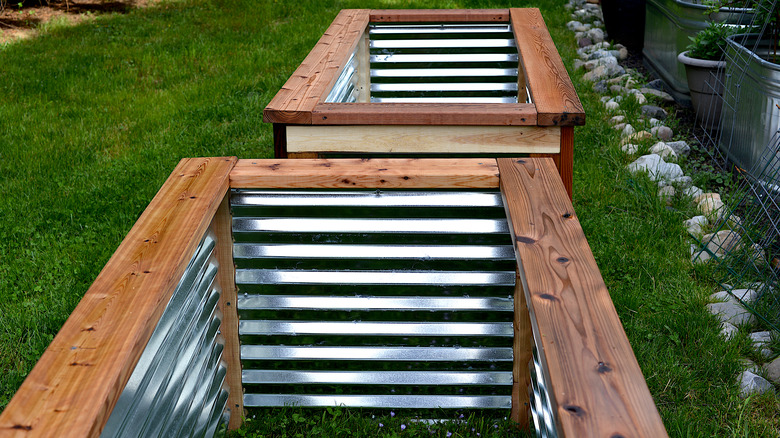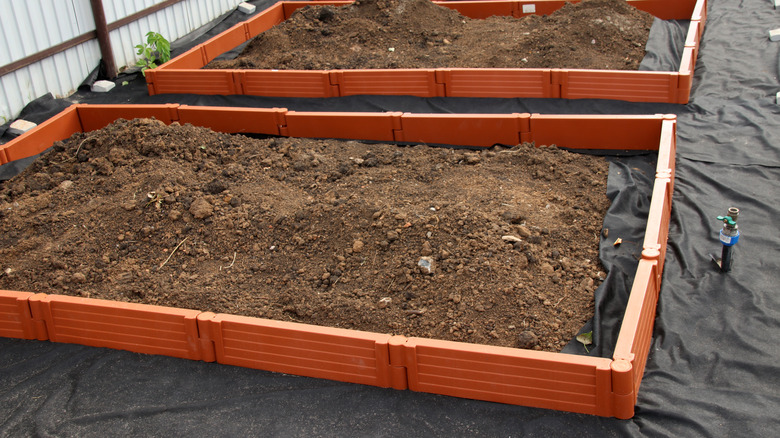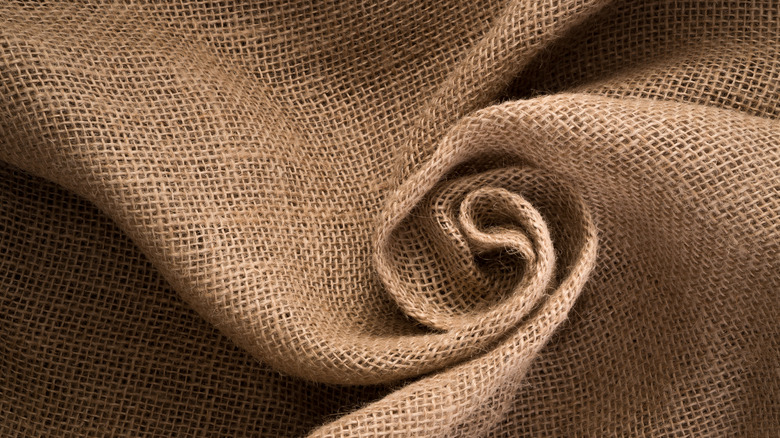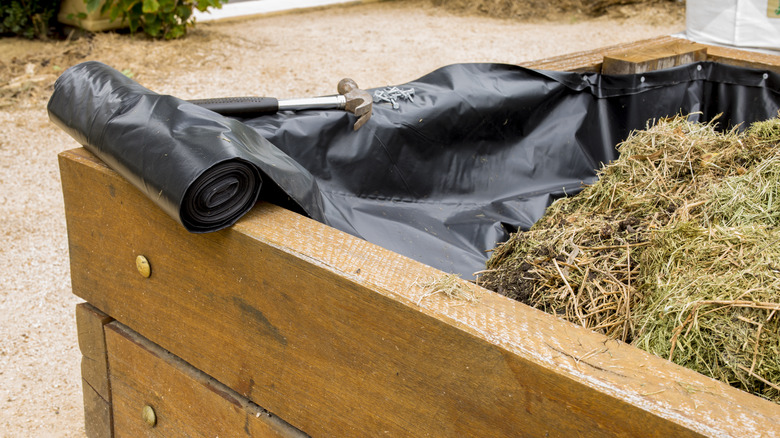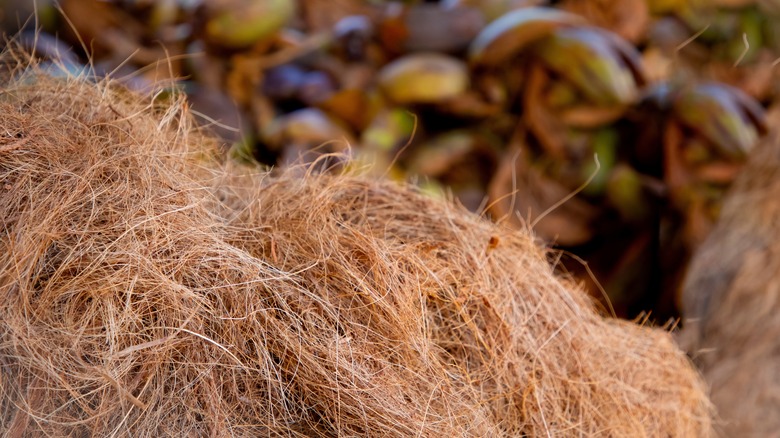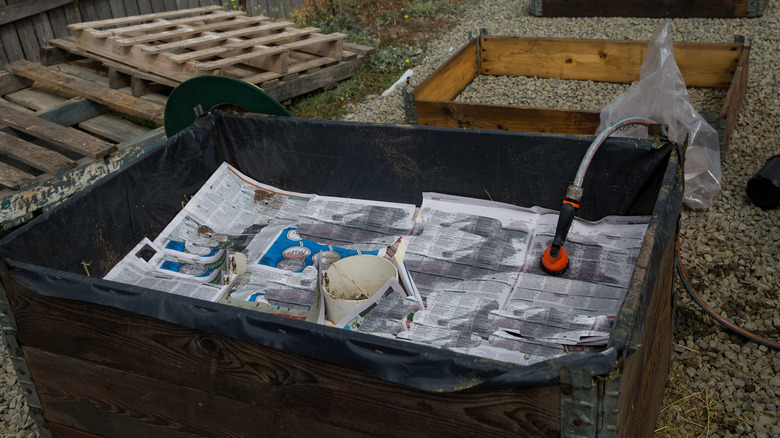5 Types Of Liners For Planter Boxes (& How To Use Them)
We may receive a commission on purchases made from links.
Whether they're in raised beds, window planters, or flower pots, liners can help address some of the key challenges that container-grown plants face. Depending on the type you choose, a liner can insulate the soil to prevent dramatic temperature fluctuations, improve moisture retention, or keep out pests. They can even help to contain the roots of aggressive spreaders. For example, if you can't resist the temptation to keep a supply of fresh, homegrown mint in your raised bed, a good, solid liner can control its spread below ground while you focus on trimming back runners above ground. While there are dozens of types of liners you can use in planter boxes, some of the most common materials include landscape fabric, burlap, plastic, coconut fiber, and newspaper. The best one for you will depend on your budget, the container you're using, and what you need the liner to do.
Burlap, for example, is a good low-cost fabric that offers great drainage while also absorbing water to keep soil consistently moist. Plastic liners, on the other hand, are great for separating plants with different watering needs in the same container. Keep reading for a complete breakdown of these five types of liners for planter boxes and how to use them.
Landscape fabric
Typically sold as a weed barrier that lays on top of soil, landscape fabric is usually a plastic or polyester material designed to be dense enough to block weeds from growing while still allowing air and water to pass through. This makes it a durable choice for lining raised beds or planter boxes. There are both woven and non-woven varieties of landscape fabric, with differing thicknesses making them more or less permeable. This makes it easy to find one tailored to the amount of drainage you need in your planter.
While it is relatively durable, landscape fabric is not a perfect or permanent solution. It can become less porous over time, and even if you chose a more permeable option, the pores will eventually trap dirt and sediment. As pores become increasingly clogged, less water is able to drain through. It also gets worn and damaged over time, but won't decompose like a natural material would. So, you have to remove and replace it periodically, a process that can be tedious and time-consuming. Even so, it can still make a good liner for planter boxes. You'll just need to be prepared to replace it as it wears out.
Burlap fabric
In a raised garden bed, burlap makes an effective substitute for landscape fabric, offering similar durability and weed control. Much like landscape fabric, lining your flower pots with burlap before planting will help hold soil in place while allowing excess water to drain through the porous material. Often made from jute or another natural fiber like flax, or hemp, burlap fabric is both breathable and absorbent. That breathability allows excess water to drain out, while the absorbent fabric will hold onto some water. Once damp, it can help keep your potting soil moist, but not waterlogged.
Burlap is often used as a cover for container plants during the winter as it helps retain heat and protect plants from frost. But, because it's more breathable than a non-permeable liner like plastic, it won't trap heat come summer. As a result, it prevents overheating and creates a stable environment. This material is also a good choice for planters where the liner will be visible. The natural material adds an earthy aesthetic to contrast with or disguise metal or plastic planter boxes. Untreated burlap will last one or two growing seasons, depending on conditions.
Plastic liners
A common recommendation you might also see is plastic sheeting for raised beds, such as Farm Plastic Supply's 10 mil sheeting. Lining your raised garden beds with plastic can help retain moisture and regulate temperature. For those using wood planters, plastic sheeting can also create a protective barrier between the soil and wood. This can preserve the wood, protecting it from rot and water damage by limiting contact with wet soil.
In addition to protecting the wood, plastic sheeting can also protect your crops from contamination if you're using a potentially harmful wood source. The pressure-treated wood you often find in hardware stores, for example, may contain arsenic. Similarly, cement or cinder blocks may contain fly hash, which contains high levels of heavy metals and hazardous waste. So, if you're using either of those, a non-permeable liner like plastic is key, especially if you plan to harvest and eat what you're growing.
If you're using plastic sheeting, you should only line the walls of the planter box with it, not the bottom. Since plastic isn't permeable, lining the bottom would prevent drainage, turning your soil into a water-logged mess. Finally, if the planter box contains garden veggie plants or herbs that you plan on consuming, make sure to use plastic sheeting made from food-grade polyethylene.
Coconut fiber
Coconut coir is a great rot-resistant material that holds soil in place while allowing plenty of airflow and drainage so roots don't become waterlogged. A popular choice for window planters, coconut coir easily conforms to the shape of the container it's in. The natural fiber also gives you the option to plant both in the top and through the sides of your planter, so you can create a full coverage display of flowers or lush foliage.
You can typically find coconut coir either as pre-formed inserts or as larger rolls that can be cut to the size and shape you need, such as the SUNYAY Natural Coconut Coir Liner Sheets. To line your planter, soak the coconut fiber first and then squeeze out excess water. The material is easier to shape when damp, so you can get it to better mold to the shape of your planter box. Since most water will drain right through coconut fiber liners, keeping the soil moist can be a challenge — especially in planter boxes with any large gaps in the sides. To combat this, you can layer the coconut coir with another liner material, like plastic, that retains moisture better.
Newspaper
Newspaper might seem like an unusual choice for lining planter boxes, but it's cheap and effective. Using one or two layers of newspaper to line your planter drainage holes can help reduce soil loss through those holes while still allowing water to seep through. It's also good to line raised beds with sheets of newspaper. Since it's biodegradable, newspaper provides a source of carbon to the soil as it breaks down. So, lining your raised beds with it can help control drainage while enriching the soil at the same time.
As it breaks down, you can simply add fresh layers of newspaper to the bottom of your bed at the start of each season. Just make sure to remove any glossy pages or inserts, since they can contain chemicals that take longer to compost. With that said, newspaper can break down pretty quickly, especially with regular watering. Because of this, they may not be the best choice for planters where you need a more permanent liner or for those who would rather a lower-maintenance setup.
